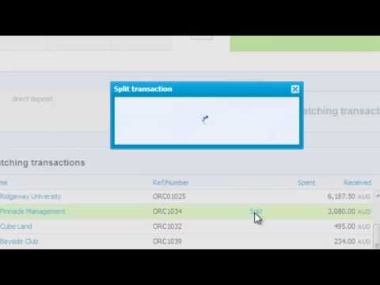Form 8941: Tax Credit for Business Health Insurance Premiums
Content

Refunds to tax-exempt organizations are subject to sequestration, which means the refundable amount will be reduced by the current fiscal year sequestration rate. One of the most important employee benefits to consider is health insurance. And if you’re worried about the cost, there’s a tax credit that can help you as long as your business or organization qualifies. Here’s what you need to know about the tax credit to help offset the cost of providing health insurance to your employees. Remember that it’s also available to small tax-exempt organizations. Thus, the employer may claim both a credit and a partial deduction for the same premium payments.
- This method assumes a work week is 40 hours per week and the calculation works the same way as the days-worked equivalency method.
- Investopedia requires writers to use primary sources to support their work.
- For small tax-exempt employers, the credit is refundable, so even if you have no taxable income, you may be eligible to receive the credit as a refund so long as it does not exceed your income tax withholding and Medicare tax liability.
- Additionally, you will need to complete Form 1095-A for each insurance policy that you have.
- According to the ACA, part-time hours are considered anything less than 30 hours per week.
- Employers who purchase health insurance through the program may get a tax credit of up to 50% of their premium contributions.
- In other words, the IRS allocates 2,080 hours per year—40 hours per week for 52 weeks—to each FTE.
The IRS designed the small business tax credit for healthcare to encourage small business owners to offer group health insurance. With the healthcare tax credit, small employers can provide their employees with group health insurance and cut down expenses. When calculating the small business health care tax credit, the employer-paid premiums are limited to the premium payment that would have been made if the employer paid the average premium for the small group market in the rating area. This means the tax credit is limited to the lesser of the actual premiums paid by the employer or the average premium that would have been paid for the small group market in the rating area in which the employee enrolls for coverage. The small business health care tax credit is another feature of the ACA, but it is limited to employers of fewer than 25 employees. It is a sliding-scale credit that is based on the size of the employer.
IRS Releases Guidance on How to Claim Expanded Veterans Tax Credit; Certification Requirements Streamlined
There are employees who are excluded from this arrangement, such as partners or owners of more than 5% of the business and family members. Businesses that operate or conduct business in Maryland that hire certain workers for newly created or certain vacant positions in the State may be entitled to a tax credit. For https://quick-bookkeeping.net/variable-manufacturing-overhead-variance-analysis/ example, a sole proprietor who files a separate Schedule C for two different businesses must treat the two businesses as a single employer for purposes of the credit. We offer various incorporation packages to get your business up and running. Starting from $99 and includes 3 months FREE Registered Agent services.
- Retirement planning helps determine retirement income goals, risk tolerance, and the actions and decisions necessary to achieve those goals.
- Keep in mind that you need to estimate your expected income for the year.
- SHOP is a program offered by the federal government to help businesses with one to 50 employees provide affordable insurance for those employees.
- When calculating the small business health care tax credit, the employer-paid premiums are limited to the premium payment that would have been made if the employer paid the average premium for the small group market in the rating area.
- If you don’t have any taxable income for the year, the credit can be carried forward or backward.
- And if you’re worried about the cost, there’s a tax credit that can help you as long as your business or organization qualifies.
The credit itself is based on the non-shareholder staff, their hours worked, wages and the premiums paid for them. The hours worked, wages and health insurance premiums of shareholders are not taken… Half of that was paid by the employer for a total of $35,000 ($70,000 × 50%) in premiums on behalf of the employees.
Qualifying Health Care Premiums
The small business health care tax credit can offset the costs if a business meets certain thresholds, offers a qualified health plan through the SHOP Marketplace, and pays at least 50% of the cost of employee-only health plans. Form 3800 is a summary of all the tax credits a business is claiming when filing What Is Form 8941? Its A Tax Credit For Small Business Health Insurance Costs its income taxes. If a business fills out form 8941 for a tax credit for small employer health insurance premiums, then it is also required to include that information on form 3800. When taking the credit for small employer health insurance premiums on Form 8941, you’ll also need to file Form 3800.

This is because two half-time employees are equivalent to one full-time employee. The American Recovery and Reinvestment Act of 2009, which became law last week, includes changes to the health benefit provisions of the Consolidated Omnibus Budget Reconciliation Act of 1985, commonly referred to as COBRA. The new law will affect former employees and their families, employers and others involved in providing COBRA coverage. Form 941, Employer’s Quarterly Federal Tax Return, will also be sent to about 2 million employers in mid-March. The form is used to claim the new COBRA premium assistance payments credit, beginning with the first quarter of 2009. Normally, an eligible employer must file Form 8850 with the state workforce agency within 28 days after the eligible worker begins work.
Education with a Bite: Tax Advantageous Strategies for the Highly Taxed Professionals and/or their Business
Form 3800 is used by business owners to report each of the tax credits that make up the general business credit—which includes the credit for insurance premiums. Therefore, you’ll enter the credit amount from Form 8941 in Part 3 of your 3800 form with the other business credits you might be taking. Your overall general business credit will include the health premiums, and the total is entered on your 1040 as a single figure. You do, however, need to file both Form 8941 and 3800 with your return. If you employ fewer than 25 full-time equivalent employees and pay at least half of the premiums for single health insurance coverage for their employees are eligible to claim a tax credit. This credit is specifically targeted to help small businesses and tax-exempt organizations that primarily employ moderate- and lower-income workers.

The small-business health care tax credit is a credit available to small businesses to help offset the cost of health care premiums they pay for their employees. To claim this credit, you will file Form 8941 with your business tax return. Health Insurance Premium Tax Credit Starting in 2014, individuals and families can take a new premium tax credit to help them afford health insurance coverage purchased through an Affordable Insurance Exchange. Exchanges will operate in every state and the District of Columbia.
If you’re unsure whether you qualify or how to claim this credit, consult your CPA or other tax professional to help you through the process. Do you have a small business as defined by the Affordable Care Act ? If so, you might be eligible for health insurance tax credits for the coverage you provide your employees.
